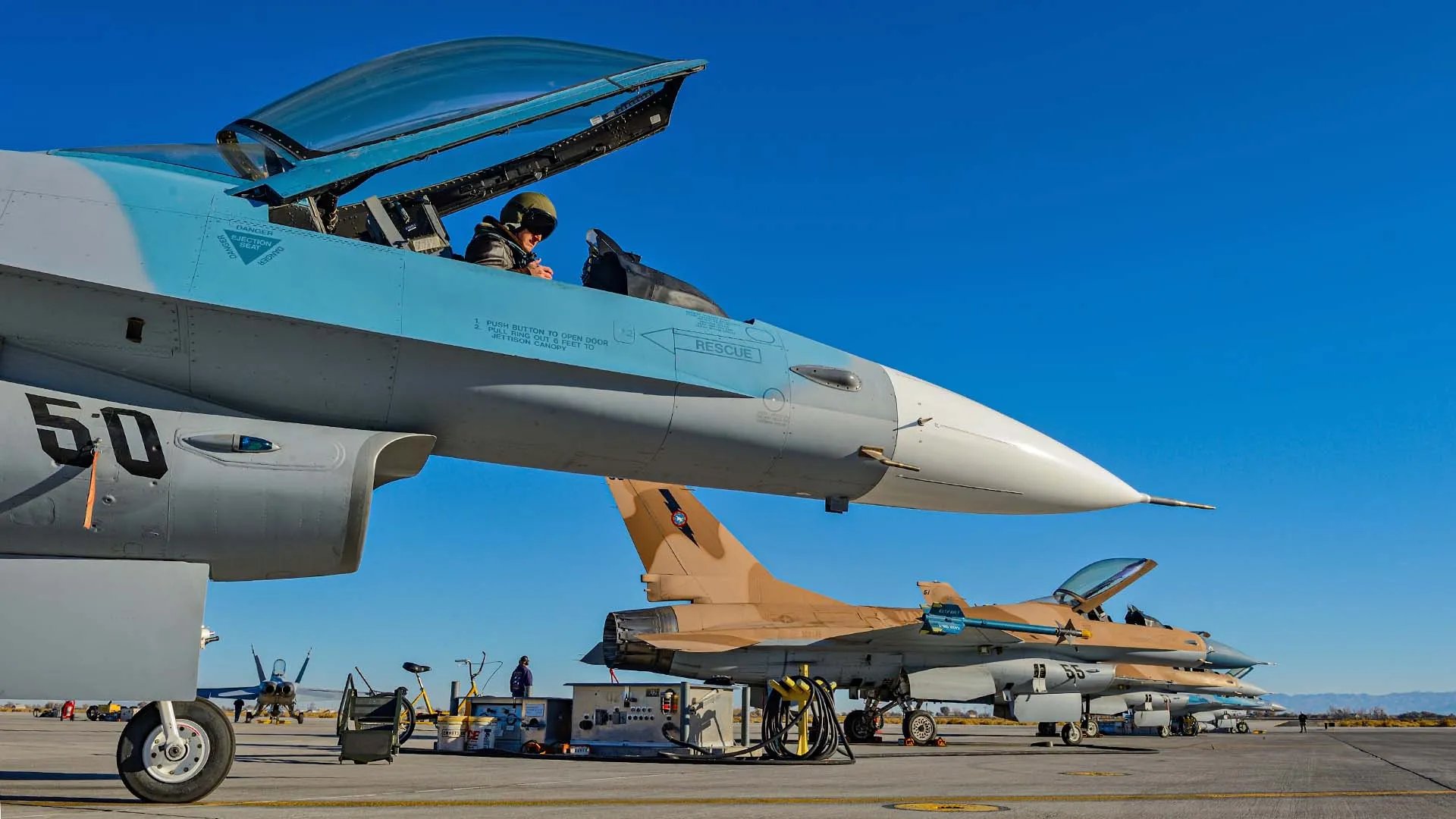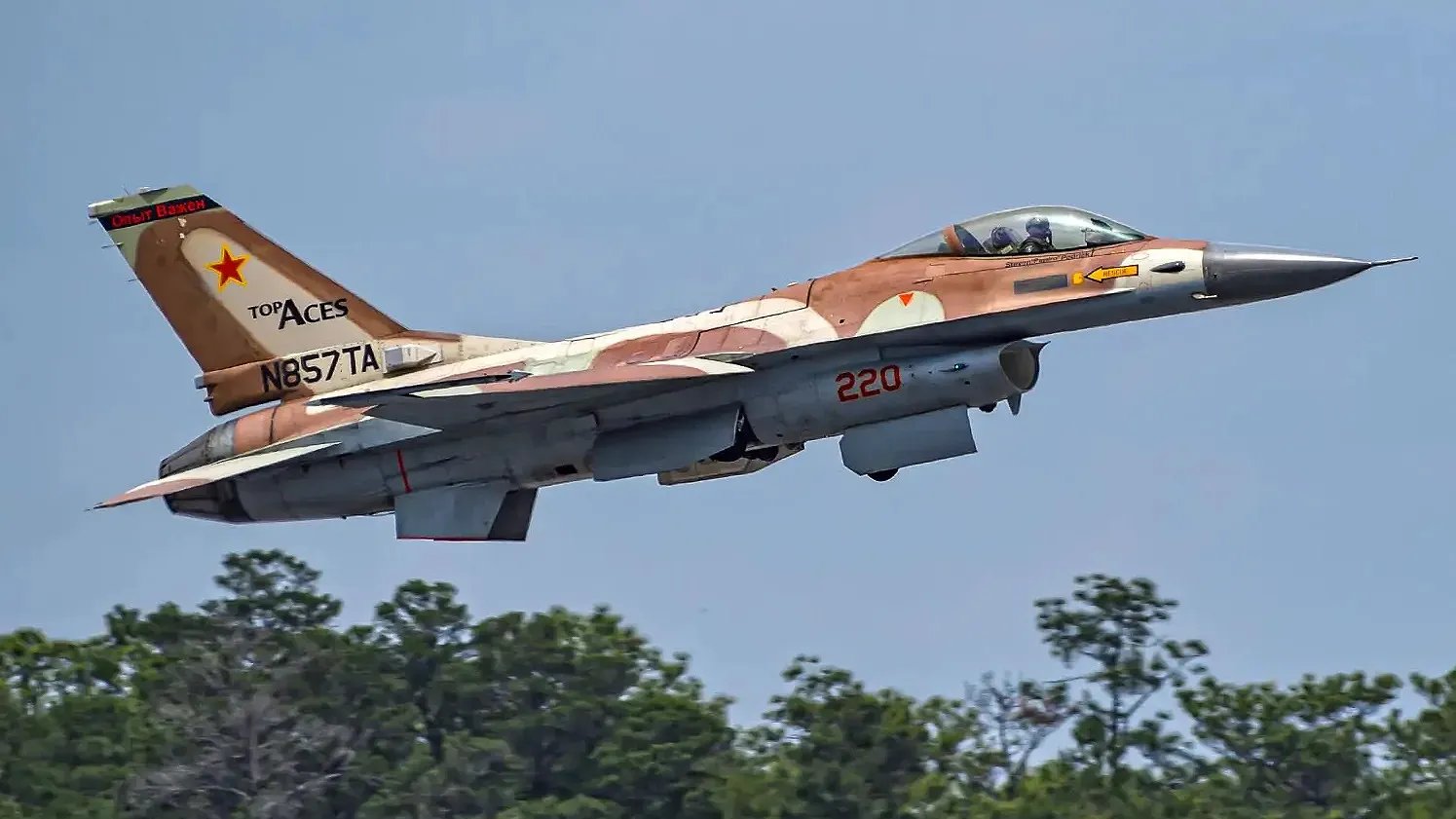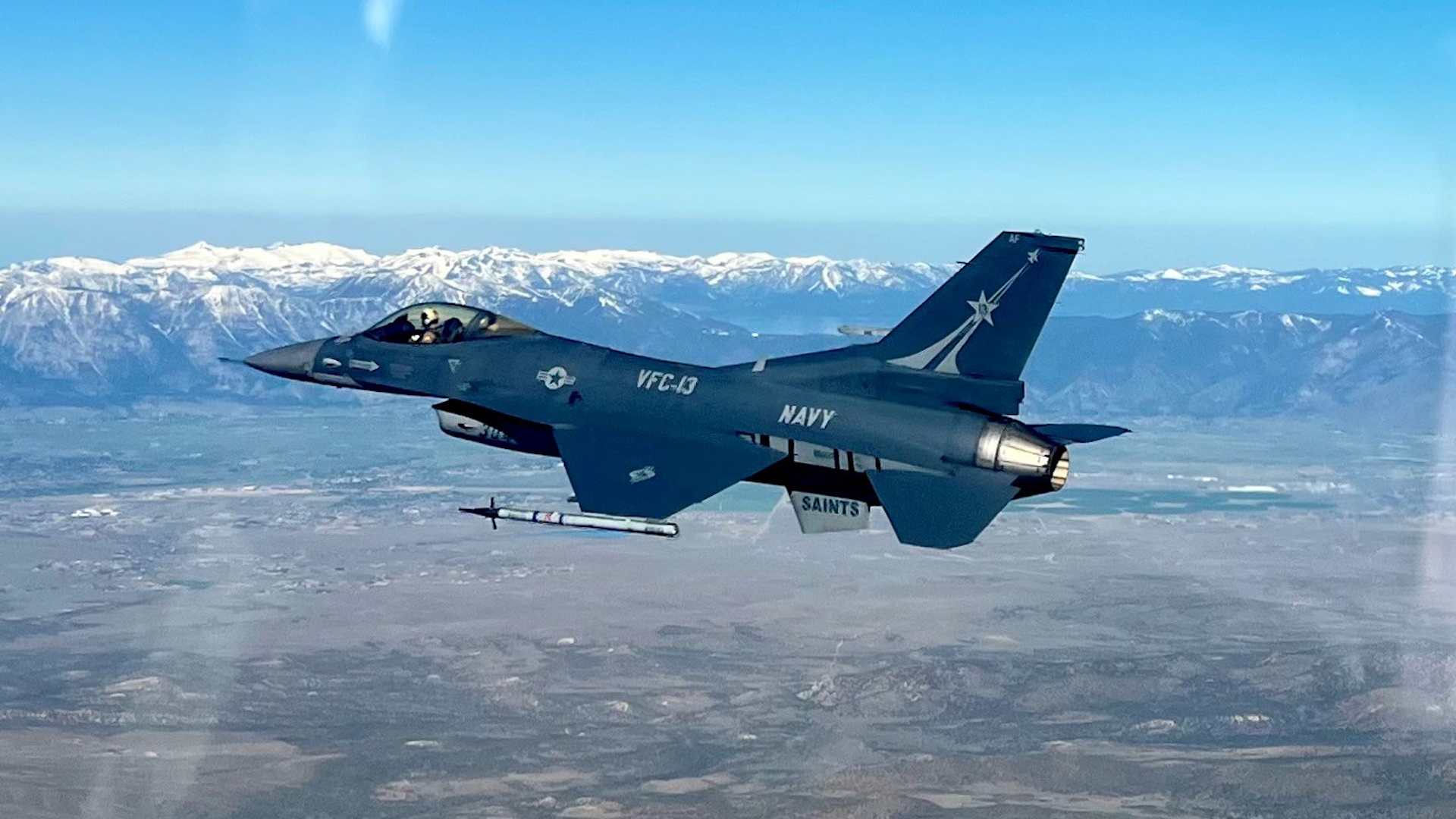The U.S. Navy tried unsuccessfully to acquire used F-16 fighters from Greece, as it set about expanding its adversary, or ‘red air’ squadrons, it has been revealed. The revelation comes as Greece steps up its efforts to dispose of older F-16s, which have long been eyed as potential aggressor jets for third-party operators and which have more recently been suggested as suitable candidates to bolster Ukraine’s F-16 force.
The account of the Navy’s efforts to obtain second-hand F-16s from the Hellenic Air Force was apparently first relayed in a press release from the service published yesterday to mark the delivery of the latest ex-U.S. Air Force F-16 to Fighter Composite Squadron 13 (VFC-13), “Fighting Saints,” based at Naval Air Station Fallon, Nevada. The detail was brought to our attention by @alert5 on the social media platform X. The jet was initially handed over at Naval Air Station Joint Reserve Base Fort Worth, Texas.

“After encountering issues with buying from Greece, we capitalized on the Air Force’s plan to retire over 30 F-16s with 2,000 to 3,000 flight hours remaining,” explained Cmdr. Traver Fordham, the Executive Officer of VFC-13.
Fordham noted that the additional jets were required to make up the difference after only 12 F/A-18E/F Super Hornets were made available to replace a fleet of around 48 ‘legacy’ F/A-18A-to-D Hornets serving with adversary squadrons, a result of the production run being wound up sooner than anticipated. The problem was exacerbated by the Navy’s decision to accelerate the withdrawal of its legacy Hornets, one that was driven primarily by high operating costs.
At the same time, the addition of more F-16s to the Navy’s adversary fleet brings big benefits in terms of capabilities, especially in comparison with the earlier F-5N Tiger IIs. As high-performance aircraft, the F-16s are far better at replicating an advanced adversary during dissimilar air combat trianing.
“New-build F-16s were too costly and time-consuming, so we looked at second-hand options,” Fordham continued.
Among those options were aircraft from Greece. Although not disclosed, these were very likely from the oldest Hellenic Air Force specimens, comprising the survivors of 34 single-seat F-16C and six two-seat F-16D Block 30 jets that were procured under the Peace Xenia I Foreign Military Sales program and delivered between 1988 and 1990.

Jim van de Burgt/Wikimedia Commons
The Greek Block 30 jets are consolidated within a single Hellenic Air Force squadron, 330 Mira, and they have undergone the Falcon UP service-life extension, meaning they still have some valuable flight hours remaining.
These aircraft are significantly less capable — and more worn-out — than Greece’s later-model F-16C/Ds, which comprise Block 50, Block 52+, and finally Block 52+ Advanced variants. But Athens has sought to offload the Block 30s, they have been identified as possible candidates for red air operations — perhaps with one of the private contractors that have sought F-16s for just such missions in the past.
It’s also unclear exactly why the Navy was unable to obtain the Greek jets, the media release only outlining “difficulties in acquiring” them.
As a result, the Navy instead “seized an opportunity” to acquire surplus aircraft from the U.S. Air Force, which had just decided to retire them.
After a transfer agreement was signed, the first of these F-16s was delivered to Fallon in April 2022, as you can read about here. The latest of these aircraft was handed over on August 27, 2024, and is the 13th to be received by the Tactical Support Wing (TSW).

Somewhat confusingly, yesterday’s Navy media release states variously that the service is receiving 26 or 30 F-16s from the Air Force. Previously, it was understood that the total was 26 and we have reached out to the Navy for clarity on this.
Last year, VFC-13 completed its first Strike Fighter Advanced Readiness Program (SFARP) with the F-16 and was declared safe for flight.
“There are always challenges when transitioning a squadron to a new platform,” explained TSW Safety Officer Cmdr. David Radomile. “In this case, we had to transition two squadrons and retrain 30 pilots, which required significant coordination and a year of effort. We also had to procure a new F-16 simulator and move our F-5 simulator to New Orleans. Another major challenge was establishing the Viper Maintenance Group (VMG), a new joint maintenance element for VFC-13 and the Naval Aviation Warfighting Development Center (NAWDC). This involved developing a coordinated approach for aircraft sharing, mishap reporting, and maintenance inspections.”
Overall, the Navy admits that the introduction of the former U.S. Air Force F-16s into its adversary fleet has not been entirely straightforward. The process has involved “its fair share of challenges, ranging from training pilots to establishing maintenance programs, support depots, and training personnel,” the Navy says.
The story of Navy F-16 adversary operations is a long and complex one, but throughout, the excellence of the powerful and agile fighter as an aggressor platform has not been in question.
The first Navy Viper was a special version, F-16N (for Navy), first received in the mid-1980s. Long regarded as something of a hotrod, the F-16N featured a strengthened and lightened airframe based on the F-16C/D Block 30 but with the older AN/APG-66 radar from the F-16A/B. The M61A1 cannon was also removed, to save weight. The aircraft were retired prematurely, in the mid-1990s, after showing signs of metal fatigue, a result of the rigors of air combat maneuvering.
Next came 14 F-16 Block 15 OCU aircraft that had been originally built for Pakistan before being embargoed and stored at the Aircraft Maintenance And Regeneration Center (AMARC) at Davis-Monthan Air Force Base, Arizona. These eight single-seat F-16As and six two-seat F-16Bs were also taken on by the Navy for adversary work.

More recently came the move to further increase the F-16 adversary fleet, to mitigate the withdrawal of the legacy Hornet.
In 2021, the Navy announced that it would be receiving 20 single-seat F-16C Block 32 aircraft and six two-seat F-16D Block 25 aircraft from the Air Force. This was part of a wider Air Force plan to retire 124 F-16s by 2026, with the service consolidating on the more modern and capable Block 40 and above.
Of these 26 jets, 12 of the F-16Cs have been allocated to VFC-13, according to the Navy, replacing F-5Ns, with the remaining eight F-16Cs and six F-16Ds going to the Naval Aviation Warfighting Development Center (NAWDC), the organization that includes the famous TOPGUN school.

You can learn the full story of these intriguing jets and all the Navy’s F-16s that followed them in the TWZ special video feature below.

With the Navy’s F-16s set to play an important role in the training of aircrews for years to come, the 14 earlier F-16A/B aircraft are being upgraded under the F-16 Service Life Extension Program (SLEP) Operational Safety Improvement Program (OSIP). This work will increase their service life to 8,000 equivalent flight hours and extend service life through airframe strengthening. The single-seat F-16C Block 32 aircraft are also going through the same procedure before being delivered to the Navy. Also planned for the jets are the Northrop Grumman AN/APG-83 active electronically scanned array (AESA) radar, Red Net adversary datalink, and center pedestal display, for a significant boost in capability.
As for Greece’s early-model F-16s, they look set to remain the missing link in the Navy’s adversary story. They could still be picked up by a private contractor offering red air services, but with Top Aces’ F-16s currently the only ones in the hands of a private operator, the chances now look less likely than they did a couple of years ago.

On the other hand, Athens looks to be keen to dispose of these aging jets, hence the suggestion this summer that they could possibly be transferred to Ukraine —something we have raised in the past, as well. The U.S. Navy’s loss might still turn out to be Ukraine’s gain, where as many as 32 F-16C/Ds could eventually join others donated by Belgium, Denmark, the Netherlands, and Norway.
Contact the author: thomas@thewarzone.com
